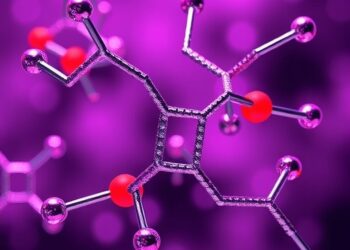COLUMBUS, Ohio – The invention of a tool capable of unlocking previously impossible organic chemical reactions has opened new pathways in the pharmaceutical industry to create effective drugs more quickly.
COLUMBUS, Ohio – The invention of a tool capable of unlocking previously impossible organic chemical reactions has opened new pathways in the pharmaceutical industry to create effective drugs more quickly.
Traditionally, most drugs are assembled using molecular fragments called alkyl building blocks, organic compounds that have a wide variety of applications. However, because of how difficult it can be to combine different types of these compounds into something new, this method of creation is limited, especially for complex medicines.
To help solve this issue, a team of chemists report the discovery of a particular type of stable nickel complex, a chemical compound that contains a nickel atom.
Since this compound can be made directly from classic chemical building blocks and is easily isolated, scientists can blend them with other building blocks in a manner that promises access to a new chemical space, said Christo Sevov, the principal investigator of the study and an associate professor in chemistry and biochemistry at The Ohio State University.
“There are really no reactions that can very reliably and selectively construct the bonds that we are now constructing with these alkyl fragments,” Sevov said. “By attaching the nickel complexes to them as temporary caps, we found that we can then stitch on all sorts of other alkyl fragments to now make new alkyl-alkyl bonds.”
The study was published in Nature.
On average, it can take a decade of research and development before a drug can successfully be brought to market. During this time, scientists also create thousands of failed drug candidates, further complicating an already extremely expensive and time-intensive process.
Despite how elusive nickel alkyl complexes have been for chemists, by relying on a unique merger of organic synthesis, inorganic chemistry and battery science, Sevov’s team found a way to unlock their astonishing capabilities. “Using our tool, you can get much more selective molecules for targets that might have fewer side effects for the end user,” said Sevov.
According to the study, while typical methods to construct a new molecule from a single chemical reaction can take much time and effort, their tool could easily allow researchers to make upwards of 96 new drug derivatives in the time it would normally take to make just one.
Essentially, this ability will reduce the time to market for life-saving medicines, increase drug efficacy while lowering the risk of side effects, and reduce research costs so chemists can work to target severe diseases that impact smaller groups, the researchers say. Such advances also pave the way for scientists to study the bonds that make up the fundamentals of basic chemistry and discover more about why these challenging bonds work, said Sevov.
The team is also already collaborating with scientists at numerous pharmaceutical companies who hope to use their tool to see how it impacts their workflow. “They’re interested in making thousands of derivatives to fine-tune a molecule’s structure and performance, so we teamed up with the pharmaceutical companies to really explore the power of it,” Sevov said.
Ultimately, the team hopes to keep building on their tool by eventually turning their chemical reaction into a catalytic process, a method that would allow scientists to speed up other chemical reactions by providing an energy-saving way to do so.
“We’re working on making it so much more efficient,” Sevov said.
Other co-authors include Samir Al Zubaydi, Shivam Waske, Hunter Starbuck, Mayukh Majumder and Curtis E. Moore from Ohio State, as well as Volkan Akyildiz from Ataturk University and Dipannita Kalyani from Merck & Co., Inc. This work was supported by the National Institutes of Health and the Camille and Henry Dreyfus Teacher Scholar Award.
#
Contact: Christo Sevov, Sevov.1@osu.edu
Written by: Tatyana Woodall, Woodall.52@osu.ed
Journal
Nature
Article Title
Reductive alkyl-alkyl coupling from isolable nickel-alkyl complexes.
Article Publication Date
29-Aug-2024




